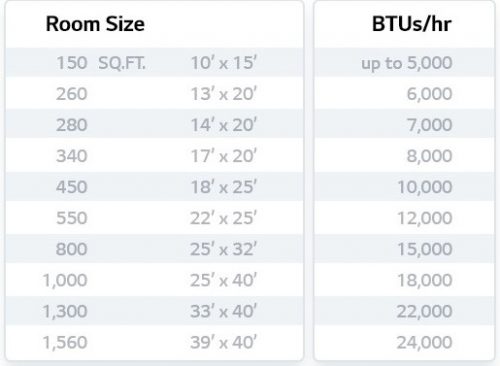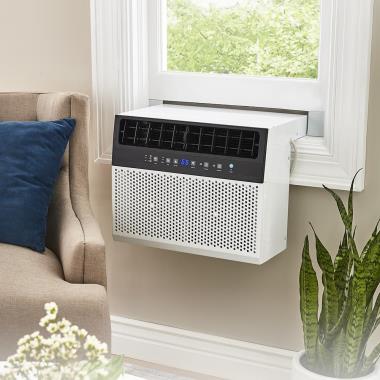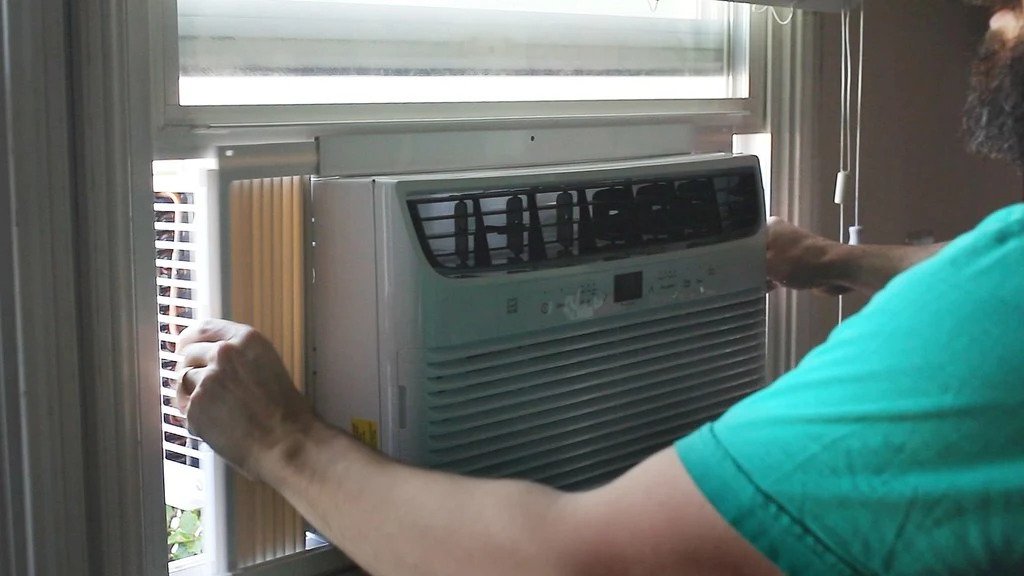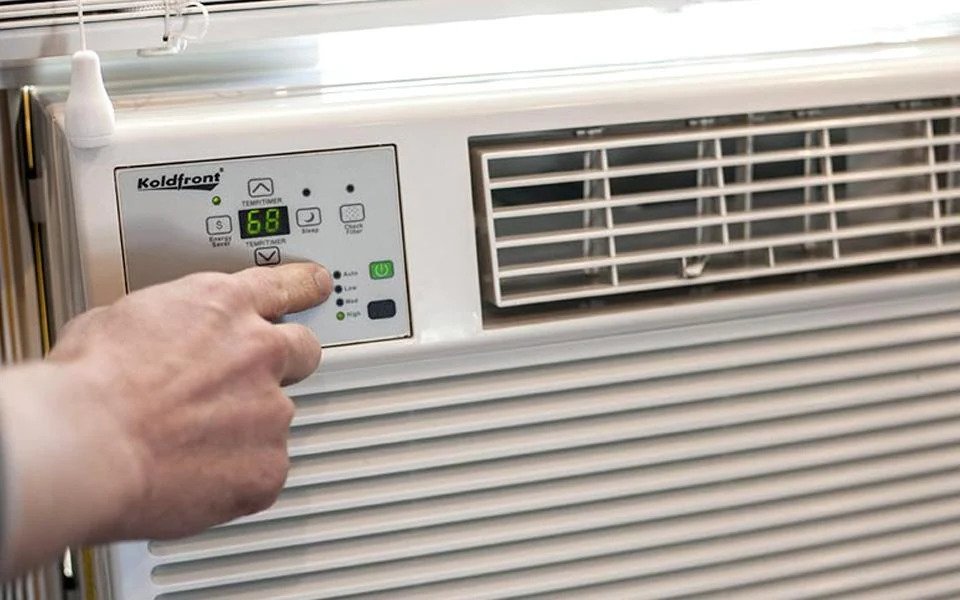Window AC units are one of the most use air conditioners systems in Canada. Benefit from window air conditioners’ cooling and energy-saving advantages (A/C). This guide will provide valuable tips on choosing and installing the perfect window air conditioner unit for your room.
How Do Window Air Conditioners Work?

A window air conditioner, often called an A/C, efficiently cools individual rooms, offering a convenient alternative to a central air conditioning system when you only require cooling for specific areas of your home. Its ease of installation makes it a practical choice for localized cooling needs.
The majority of window air conditioners come equipped with various operating modes. Among these modes, the cooling mode stands out, as it effectively lowers the temperature and humidity of the room’s Air before recirculating it with the help of a built-in fan.
Certain models offer the convenience of choosing from multiple preset cooling levels, allowing you to achieve the ideal climate for your room. On the other hand, some models enable you to set a specific temperature that the air conditioner will maintain. These units operate with the assistance of a sensor, which turns off the cooling process once the Air reaches the preset level. If the actual temperature exceeds the specified setting, the unit resumes cooling the Air to maintain the desired temperature.
Engaging the fan-only mode consumes less energy since it doesn’t utilize the air conditioning component. In this mode, the appliance functions similarly to a regular fan, effectively circulating and filtering the Air within the room. Additionally, certain window air conditioners are equipped with a heating mode. Like the cooling function, you can set the desired temperature, and the heating system will cycle on and off to sustain it. It is crucial to refer to the air conditioner manufacturer’s instructions for essential safety, installation, and operational guidelines.
Window Air Conditioners Sizes
Selecting the appropriate size of a window air conditioner for your room is paramount. An undersized unit might not effectively cool the room, while an oversized one could fail to remove humidity, leading to a damp atmosphere adequately. To ensure proper air conditioner sizing, begin by calculating the square footage of your room by multiplying its length by width. This step forms the basis for finding the ideal air conditioner size for your needs.
After calculating your room size, comparing it with the window air conditioner’s British thermal unit (BTU) rating is crucial. The BTU rating represents the A/C’s capability to eliminate heat from a room. Opt for a higher BTU rating unit if you need to cool a larger room effectively.

Below are some general guidelines to help you choose the appropriate BTU for your room size:
- For rooms measuring 150 to 350 square feet: Choose an A/C with a BTU rating between 5,000 to 8,000 BTU.
- For rooms measuring 350 to 550 square feet: Opt for an A/C with a BTU rating between 8,000 to 12,000 BTU.
- For rooms measuring 550 to 1,050 square feet: Select an A/C with a BTU rating between 12,000 to 18,500 BTU.
- For rooms measuring 1,050 to 1,600 square feet: Look for an A/C with a BTU rating between 18,500 to 25,000 BTU.
To enhance efficiency, consider factors that can influence the cooling requirements, such as the level of shade or sun exposure in your room. Remember that as the BTU rating rises, so does the size and weight of the air conditioner. Additionally, pay attention to the window air conditioner’s energy-efficiency ratio (EER), as opting for a higher EER rating is essential for creating an energy-efficient home.
Window Air Conditioners Features

After establishing the ideal window air conditioner size for your requirements, it’s time to consider the features you desire in your unit. Here are some commonly available window air conditioner features:
- With a programmable timer, you can schedule the unit to turn on and off at designated times, effectively minimizing energy consumption.
- Smart air conditioners offer the convenience of remote control through your phone and a connected app.
- Mechanical controls provide a user-friendly way to adjust the fan speed and cooling level easily.
- Electronic controls provide the convenience of programming a precise temperature for the air conditioner.
- Specific window air conditioner models feature a gradual cooling ramp-up capability, ensuring a gentle and quieter nighttime operation while keeping the temperature comfortable.
- Electronic ionizers are equipped to effectively eliminate impurities, such as pollen, from the Air, promoting cleaner and healthier indoor environments.
- Venting options provide the flexibility to decide between recirculating room air or drawing outside air into the room while exhausting indoor Air to the outside. As air conditioners function, they also remove humidity from the Air. When choosing a unit, consider the dehumidification rating, which indicates the number of pints of moisture the air conditioner can remove per hour. This feature helps prevent mould development and unwanted odours, promoting a healthier and more comfortable environment.
- Using a remote control, you can conveniently adjust settings and power the air conditioner on and off from any room corner. Additionally, certain remotes can serve as portable temperature sensors, ensuring even cooling throughout the space. These remotes activate the air conditioner when the Air around them reaches a predetermined temperature, enhancing comfort and efficiency.
- Filter sensors are designed to notify you when the air filter requires cleaning, contributing to improved air quality. When selecting a model, consider opting for one with a washable filter for hassle-free and easy cleaning, ensuring the continuous efficiency of the air conditioner.
- Specific models are equipped with an extra-long power cord, which proves beneficial when your preferred window location is not near a power outlet. This feature provides added flexibility and convenience during installation, allowing you to position the window air conditioner precisely where needed.
How To Install Window Air Conditioners (AC Units)?

Most window air conditioners are specifically designed to fit standard windows that can be raised or lowered.
Before selecting, ensure to measure the inside dimensions of the installation window meticulously to guarantee a proper fit. Due to their weight, it’s crucial to have assistance during installation to ensure a safe and secure setup.
Before installing a window air conditioner, consider the following:
- Optimal Placement: To enhance efficiency, choose a shaded window for installation, preferably facing north, as it will remain in the shade for most of the day.
- Power Outlet Requirements: Ensure the selected window has a nearby power outlet. Check the manufacturer’s recommendations regarding plugging the device directly into the outlet without an extension cord. Additionally, confirm that the outlet’s circuit can handle the electrical load of the air conditioner. Some models may have specific plug shapes and power requirements, necessitating a modified outlet to handle the energy load. Carefully review the product description to ensure compatibility before making a purchase.
- Professional Assistance: If you have any doubts or questions about the installation process or the necessary parts and accessories, it’s best to consult a licensed electrician. They can provide guidance and assistance to ensure a successful installation.
Can You Optimize Window Air Conditioners Efficiency?

To optimize the cooling efficiency of your window air conditioner, consider the following tips:
- Ensure Unobstructed Airflow: Allow free airflow around the entire air conditioner by keeping the unit clear of any obstructions, such as bushes, that could interfere with its operation. Also, ensure indoor items like window treatments and furniture are positioned away from the unit.
- Minimize Air Escaping: Preserve the cool Air inside the room by shutting fireplace dampers and floor or wall registers.
- When it’s sunny outside, consider closing shades or blinds, as long as they don’t block the airflow, to prevent heat from entering.
- Proper Insulation and Weatherstripping: Maintain correct insulation and weatherstripping throughout your home to prevent unnecessary heat exchange. Utilize weatherstripping and foam side panels to seal and insulate the area surrounding the air conditioner effectively.
- Time Appliances Wisely: Manage your energy usage by operating energy-intensive appliances, such as dishwashers and dryers, primarily during the cooler hours of the day to avoid additional heat generation.
Learn more about how to increase energy efficiency of air conditioners.
Window AC Units Maintenance

Consistent air conditioner maintenance is vital to ensure the long-term efficiency of your new window unit. Always remember to unplug your air conditioner before conducting any maintenance tasks.
Here are the essential maintenance tasks you should regularly perform:
- Clean or Replace the Air Filter: Follow the manufacturer’s guidelines to regularly clean or replace the air filter. A clean filter ensures your A/C remains efficient and reduces dust. Prolong the filter’s lifespan by vacuuming or washing it with water and mild soap, ensuring it is completely dry before reinstalling.
- Gently Wipe Down the Cabinet: As needed, gently wipe down the cabinet, avoiding the control panel to keep it clean and well-maintained.
- Seasonal Storage Preparation: If required, prepare the unit for seasonal storage following the manufacturer’s instructions to safeguard its components during periods of non-use.
By adhering to these maintenance practices, you can ensure that your window air conditioner remains in excellent condition and operates efficiently for years.
Window Air Conditioners Cost

Investing in a new air conditioner (AC) can be significant, but if you seek a cost-effective alternative, window-mounted ACs offer a great option for cooling smaller living spaces like apartments. The installation cost for some window ACs can be as low as $150, while others may go up to $2,000 or more.
